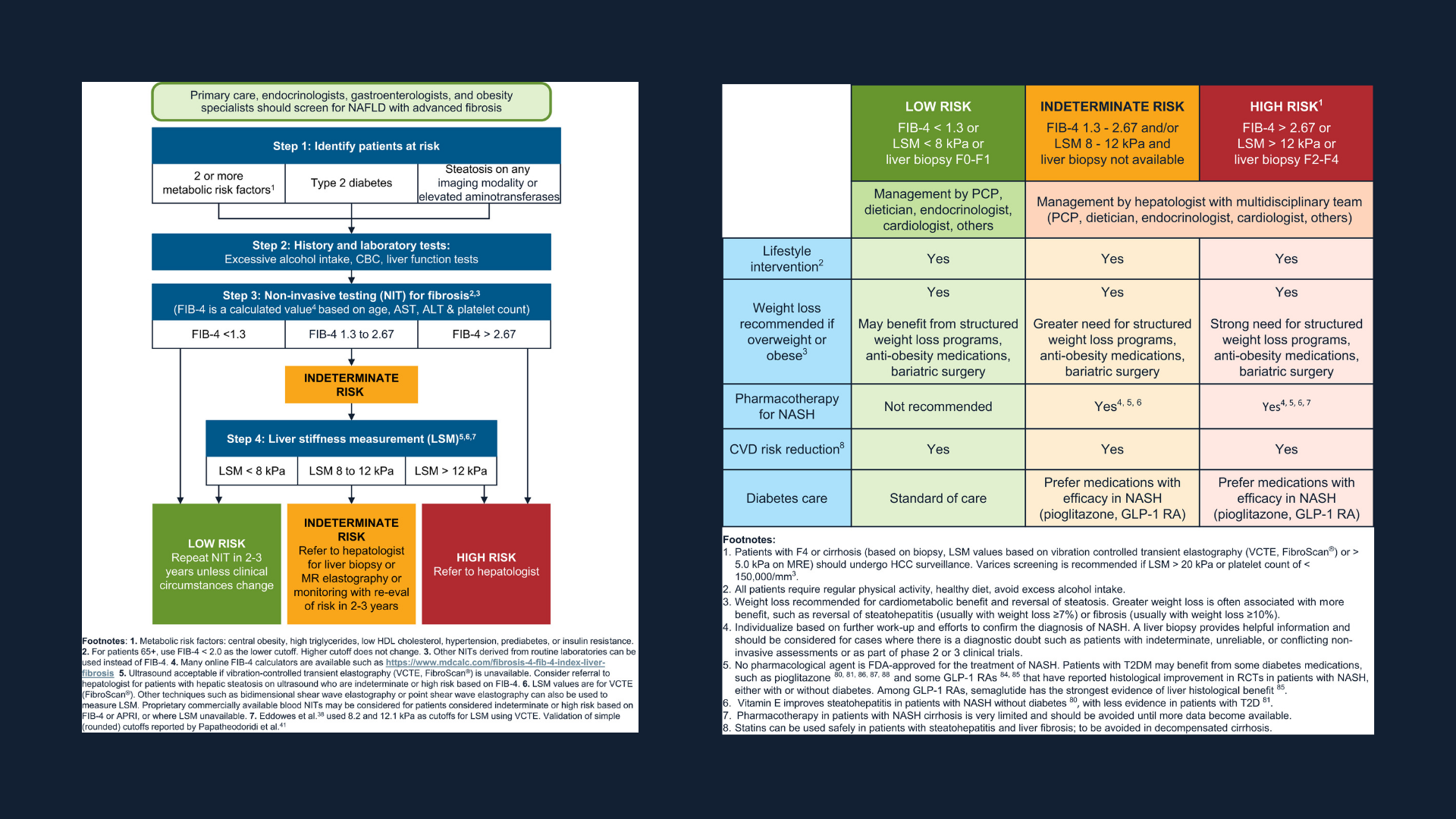AGA — in collaboration with seven professional associations — assembled a multidisciplinary taskforce of 15 experts to develop an action plan to develop a non-alcoholic fatty liver disease (NAFLD)/non-alcoholic steatohepatitis (NASH) Clinical Care Pathway providing practical guidance across multiple disciplines of care. The guidance ranges from screening and diagnosis to management of individuals with NAFLD and NASH, facilitating value-based, efficient, and safe care that is consistent with evidence-based guidelines.
This clinical care pathway is intended to be applicable in any setting where care for patients with NAFLD is provided, including primary care, endocrine, obesity medicine and gastroenterology practices.
Here are a few management and screening takeaways from the special report:
NAFLD/NASH screening steps
Step 1: Identifying patients with clinically significant hepatic fibrosis (fibrosis stage 2 or higher) is important for targeted efforts at preventing disease progression. These groups include patients with type 2 diabetes, patients with two or more metabolic risk factors, and those with incidental findings of hepatic steatosis or elevated aminotransferases.
Step 2: All at-risk patients identified in Step 1 should be screened for alcohol use and undergo liver function tests (or comprehensive metabolic panel, if done as part of routine care) and a complete blood count as part of the initial screening process.
Step 3: All individuals in the target risk groups should undergo non-invasive testing for clinically significant liver fibrosis using simple, non-proprietary fibrosis scores.
Step 4: Patients with discordant or indeterminate liver stiffness measurement (LSM) results (8.0 to 12.0 kPa) in primary care and endocrine clinics should be referred to hepatology where they may need to undergo either a liver biopsy or magnetic resonance elastography (MRE) for further diagnostic evaluation.
Management of NAFLD/NASH
- Patients at low-risk of advanced fibrosis should be managed using therapeutic lifestyle interventions, such as weight loss, as appropriate, nutritional strategies, stress management, regular physical exercise and avoiding excess alcohol intake. Specific pharmacological treatment targeting liver steatosis is not necessary in this lower-risk population.
- Patients at high-risk advanced fibrosis should be managed by a multidisciplinary team closely coordinated by a hepatologist who can monitor for cirrhosis, hepatocellular carcinoma and other cirrhosis-related complications. In these patients, we recommend aggressive lifestyle changes aimed at long-term weight loss, including a greater use of formal weight loss programs and potentially, surgery.
- Patients at indeterminate-risk of advanced fibrosis should be managed using a similar approach to high-risk patients, along with further work-up and efforts to confirm the stage of hepatic fibrosis. In some cases, proprietary plasma biomarker tests for fibrosis staging or additional imaging-based fibrosis measurement (i.e., MRE) studies may be used to guide patient care.
Read the special report: Clinical Care Pathway for the Risk Stratification and Management of Patients with Nonalcoholic Fatty Liver Disease.
To learn more about the development of this publication, visit NASH.gastro.org.












